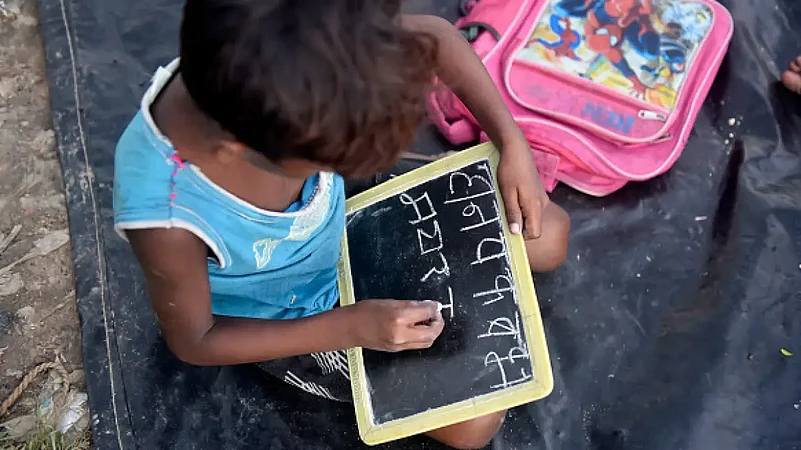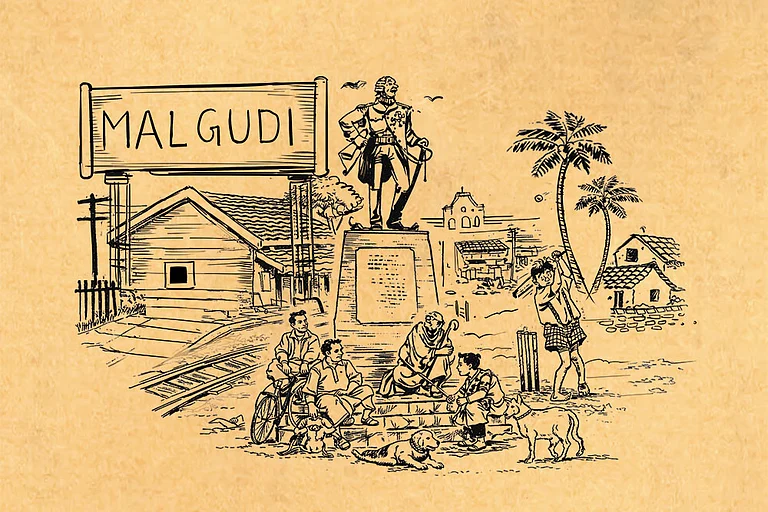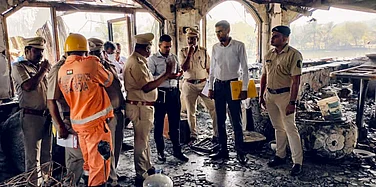The Ministry of Home Affairs recently completed the Mother Tongue Survey of India (MTSI) with a field video of the country’s 576 languages.
The MTSI “surveys the mother tongues, which are returned consistently across two and more Census decades” and analyses their linguistic features.
A web archive has been planned to be set up at the National Informatics Centre (NIC) to preserve and analyse the original flavour of each indigenous mother tongue, according to the annual report of the home ministry for 2021-22.
For this purpose, proper editing in arranging the linguistic data by in-house linguists is under process, it said.
The NIC and the National Film Development Corporation (NFDC) are currently documenting and preserving the linguistic data of the surveyed mother tongues in video-audio files.
Also Read: Language Diary | An Ethnologist's View On Dying Andamanese Languages
How many mother tongues are spoken in India?
According to the 2011 linguistic census data released in 2018, there are more than 19,500 languages and dialects spoken as mother tongues in India.
These 19,500 languages were further grouped into 121 categories of mother tongue after linguistic scrutiny and rationalising.
According to 2011linguistic census data, Hindi is the most spoken mother tongue by 52.8 crore people of the country, accounting for 43.6 per cent of the population. Following that, 9.7 crore people or 8 per cent of the population spoke Bengali, making it the country’s second most popular mother tongue.
However, it must be noted that “mother tongue” is a designation given to a language by the respondent of the survey, not identical to the actual linguistic medium.
Also Read: Marathi Pride Is Passe, Shiv Sena's Apathy Hurts The Language
What is the Linguistic Survey of India?
The home ministry said the Linguistic Survey of India (LSI) is a regular research activity in the country since the 6th Five Year Plan.
According to the official website of the LSI, the primary objective of the present Linguistic Survey of India is to present an updated linguistic scenario.
It further aims to provide necessary inputs to the social/educational planners in respective States for their planning to attain the envisaged goals.
In continuation to earlier publications under this project, the volume on LSI Jharkhand is finalised and that on LSI Himachal Pradesh is nearing completion.
The fieldwork of LSI Tamil Nadu and Uttar Pradesh is going on.
Also Read: Hindi Diwas: The Malayali Loves Hindi, But Don't Take It As Acquiescence
Mother tongue in education
Union Minister Dr Subhas Sarkar on Tuesday said that under the National Education Policy (NEP), 2020, the focus is on promoting mother tongue and regional languages.
In September, President Droupadi Murmu emphasised that talent development in science, literature and social sciences can be more effective if taught in one’s mother tongue.
She was addressing the gathering at National Teachers Awards ceremony where she recalled the contribution of her school teachers due to which she became the first girl from her village to go to college.
“Talent development in science, literature and social sciences can be more effective if taught in mother tongue,” she said.
In July, early this year, union home minister Amit Shah on Friday said that pursuing education in a language other than one’s mother tongue prevented 95 per cent of Indians from achieving their true potential.
His comments, made at an event celebrating two years of the National Education Policy (NEP), come amid a government push for the use of Indian languages in higher education, especially engineering.
“I strongly feel that education in the mother tongue has a strong association with the promotion of research. If we have to promote research and development, we have to provide education in the mother tongue,” the home minister said.
What is the status of the upcoming Census?
he home ministry said in the upcoming census, which has been kept on hold due to the COVID-19 pandemic, several new initiatives have been taken for facilitating the smooth conduct of the mega exercise, including use of the advanced geospatial technology. The pre-census mapping activities include the preparation and updating of maps showing administrative units of the states and UTs, districts, sub-districts, villages, towns and wards within towns to ensure proper coverage of the entire geographical area of the country. Further, efforts are being made for the dissemination of Census results through web-based interactive maps. Preparatory work in this direction has already been initiated.
Some of these initiatives include the purchase of versions and re-modules of software for completing the Census mapping activities in a quick and efficient manner and all mapping manpower trained on using the latest software, the report said.
Jurisdictional changes that occurred in the country after Census 2011 till December 31, 2019, have been updated in the geo-referenced database and further updates are going on as the freezing date has been extended up to June 30, 2022.
More than 6 lakh maps (district, sub-district, village level) have been prepared and uploaded in the in-house portal for census functionaries and the same will be further updated and finalised as per jurisdictional changes till June 2022.
For the first time, the House Listing Block (HLB) Mobile Mapping App for geo-referencing of all enumeration blocks of the coming census in the country has been introduced and necessary training on this has been imparted to national and master trainers.
Instructions manual on the use of mapping app has been prepared in English, Hindi and regional languages, the report said.
(with PTI inputs)


























